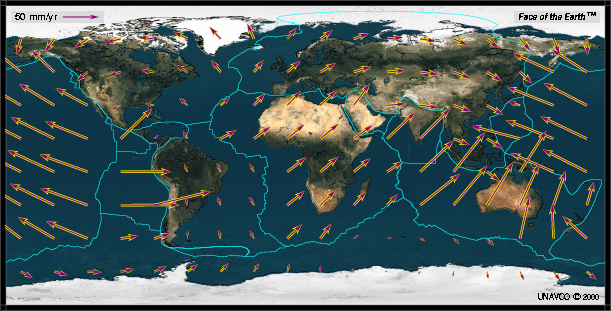PPP and tectonic plate motion
March 31st, 2009 by Ricardo PírizWe have recently introduced our new algorithm for Precise Point Positioning (PPP). One of the things you can do with PPP is to monitor the displacement of your station(s) over long periods of time. Even if your station is installed on a very stable location, it will unavoidably move a little bit over the years due to the slow but steady displacement of the tectonic plate the station is placed on. The plate motion velocity changes a lot from plate to plate, the following map (from UNAVCO) shows a general view of the Earth:




